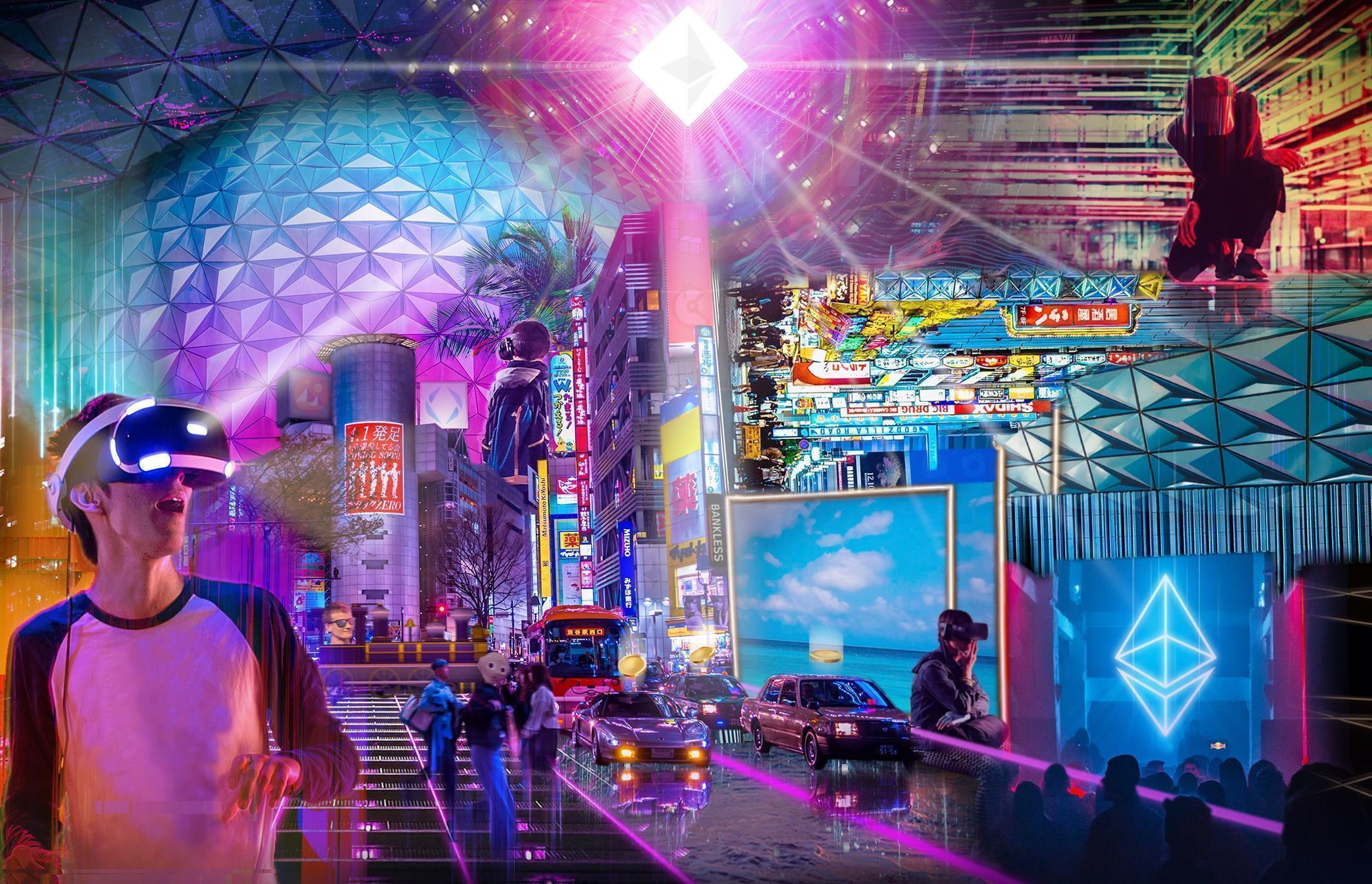The metaverse is a concept of a persistent, online, 3D universe that combines multiple different virtual spaces. You can think of it as a future iteration of the internet. The metaverse will allow users to work, meet, game, and socialize together in these 3D spaces.
The metaverse isn’t fully in existence, but some platforms contain metaverse-like elements. Video games currently provide the closest metaverse experience on offer. Developers have pushed the boundaries of what a game is through hosting in-game events and creating virtual economies.
Although not required, cryptocurrencies can be a great fit for a metaverse. They allow for creating a digital economy with different types of utility tokens and virtual collectibles (NFTs). The metaverse would also benefit from the use of crypto wallets, such as Trust Wallet and MetaMask. Also, blockchain technology can provide transparent and reliable governance systems.
Blockchain, metaverse-like applications already exist and provide people with liveable incomes. Axie Infinity is one play-to-earn game that many users play to support their income. SecondLive and Decentraland are other examples of successfully mixing the blockchain world and virtual reality apps.
When we look to the future, big tech giants are trying to lead the way. However, the decentralized aspects of the blockchain industry is letting smaller players participate in the metaverse’s development as well.
The connections between the financial, virtual, and physical worlds have become increasingly linked. The devices we use to manage our lives give us access to almost anything we want at the touch of a button. The crypto ecosystem hasn’t escaped this either. NFTs, blockchain games, and crypto payments aren’t just limited to crypto geeks anymore. They’re now all easily available as part of a developing metaverse.
The concept was developed in the science-fiction novel Snow Crash by Neal Stephenson. However, while the idea of a metaverse was once fiction, it now looks like it could be a reality in the future.
The metaverse will be driven by augmented reality, with each user controlling a character or avatar. For example, you might take a mixed reality meeting with an Oculus VR headset in your virtual office, finish work and relax in a blockchain-based game, and then manage your crypto portfolio and finances all inside the metaverse.
You can already see some aspects of the metaverse in existing virtual video game worlds. Games like Second Life and Fortnite or work socialization tools like Gather.town bring together multiple elements of our lives into online worlds. While these applications are not the metaverse, they are somewhat similar. The metaverse still doesn’t exist yet.
Besides supporting gaming or social media, the metaverse will combine economies, digital identity, decentralized governance, and other applications. Even today, user creation and ownership of valuable items and currencies help develop a single, united metaverse. All these features provide blockchain the potential to power this future technology.
Because of the emphasis on 3D virtual reality, video games offer the closest metaverse experience currently. This point isn’t just because they are 3D, though. Video games now offer services and features that cross over into other aspects of our lives. The video game Roblox even hosts virtual events like concerts and meetups. Players don’t just play the game anymore; they also use it for other activities and parts of their lives in “cyberspace”. For example, in the multiplayer game Fortnite, 12.3 million players took part in Travis Scott’s virtual in-game music tour.

